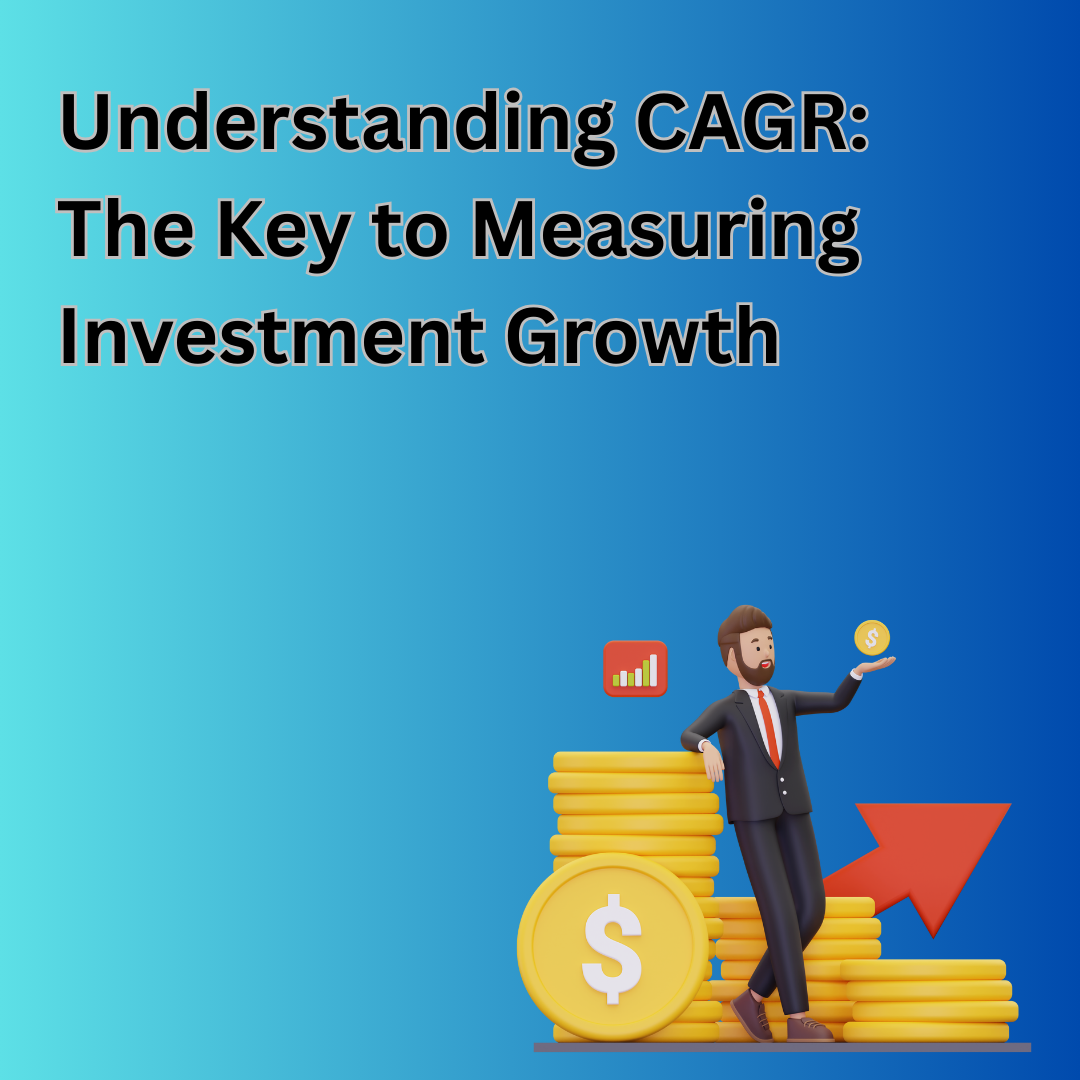Understanding CAGR: The Key to Measuring Investment Growth

When it comes to investing, looking only at how much your money has grown isn’t enough. To make smarter financial decisions, you need to know how consistently your investment has grown over time. This is where CAGR (Compound Annual Growth Rate) plays an important role.
CAGR is a widely used measure that shows the average annual growth rate of an investment over a certain period, assuming that the profits are reinvested every year. It helps investors cut through short-term fluctuations and focus on the long-term growth potential of an investment.
What is CAGR?
CAGR stands for Compound Annual Growth Rate. It tells you the yearly growth rate of your investment, as if it grew at a steady pace each year, even though actual returns may vary annually.
For example, if you invested ₹1,00,000 and it grew to ₹1,61,000 in 5 years, the CAGR would be 10%. This doesn’t mean the investment grew exactly 10% every year — some years could have been higher, some lower — but CAGR smooths out the growth to give you an average annual rate.
How is CAGR Calculated?
The formula to calculate CAGR is:
CAGR = (Ending Value / Beginning Value) ^ (1 / Number of Years) – 1
- Beginning Value: Investment amount at the start
- Ending Value: Value of the investment at the end
- Number of Years (n): Duration of the investment
Example:
Suppose you invest ₹10,000 in a mutual fund. After 5 years, it grows to ₹17,000.
CAGR = (17,000 ÷ 10,000) ^ (1/5) – 1
CAGR = 0.1119 or 11.19%
This means your money grew, on average, by 11.19% per year over the 5-year period.
Why is CAGR Important?
- CAGR is more than just a number — it’s a tool to evaluate investment performance. Here’s why it matters:
- Performance Comparison – Helps you compare different investments (stocks, mutual funds, gold, etc.) over the same period.
- Long-term Planning – Assists in projecting how fast your investments can grow, which is useful for goal-based planning (like retirement or children’s education).
- Risk Evaluation – A consistently high CAGR indicates stability, while low or negative CAGR signals underperformance.
- Clarity Amid Volatility – Instead of focusing on yearly ups and downs, CAGR gives a clear long-term picture.
CAGR vs. Absolute Returns
- Absolute Return shows the total gain or loss over an investment period. For example, ₹1 lakh becoming ₹1.5 lakh means a 50% absolute return.
- CAGR, however, breaks it down into annual growth, making it easier to compare investments held for different durations.
CAGR vs. XIRR
- Many investors confuse CAGR with XIRR:
- CAGR is best suited for lump-sum investments.
- XIRR (Extended Internal Rate of Return) is used for investments with multiple cash flows, like SIPs (Systematic Investment Plans), where money is invested regularly at different times.
So, if you invested ₹10,000 every month in a mutual fund, CAGR would not reflect the true returns — XIRR would give a more accurate picture.
What is a Good CAGR?
There is no universal “good” CAGR; it depends on the type of investment and your financial goals.
- Large-cap investments: Typically deliver 8%–12% CAGR over the long term.
- Mid-cap and small-cap investments: More volatile, but can generate 15%+ CAGR if held for a longer horizon.
- Safe investments (like FDs): Generally offer 5%–7% CAGR, which may barely beat inflation.
A good CAGR is one that not only beats inflation but also aligns with your risk appetite and long-term goals.
Advantages of CAGR
- Provides a clear picture of long-term performance.
- Allows fair comparison between different asset classes.
- Considers compounding, which is critical in wealth creation.
- Helps investors set realistic expectations for financial goals.
Limitations of CAGR
- Ignores yearly volatility and market fluctuations.
- Cannot be used for periodic investments like SIPs.
- Based only on past performance; not a guarantee of future returns.
- May hide short-term risks by showing only an average rate.
Conclusion
CAGR is one of the simplest yet most powerful tools to measure investment performance. It gives investors a realistic idea of long-term returns by smoothing out yearly fluctuations. However, while it is perfect for lump-sum investments, it should not be confused with XIRR, which is more suitable for SIPs.
When planning your investments, don’t just look at the total return — always check the CAGR to understand how consistently your wealth is growing and whether it is aligned with your financial goals.
































